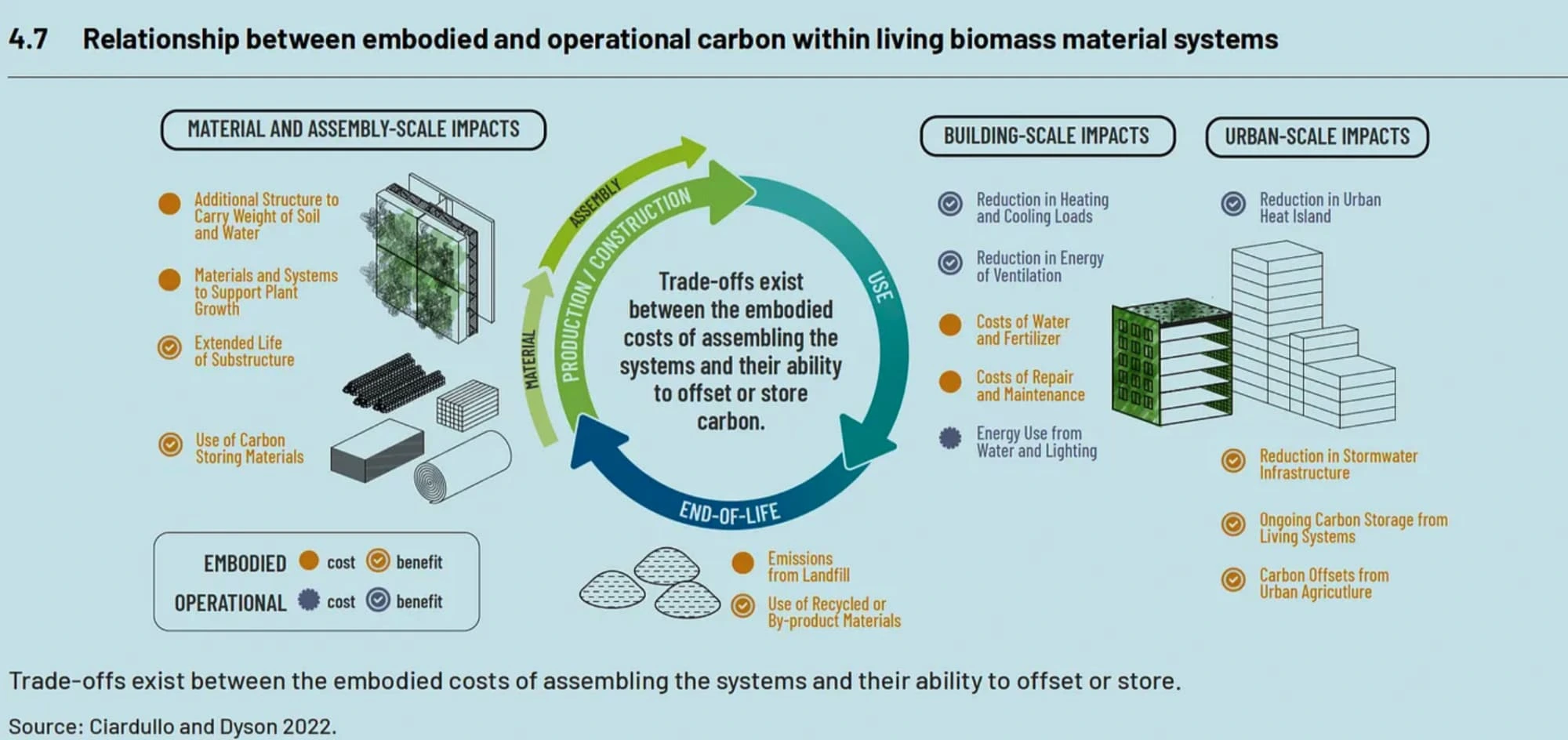The Carbon Trade-Off in Living Biomass Material Systems
The construction and use of buildings contribute significantly to carbon emissions. However, innovative approaches are being developed to offset these emissions. One such approach is the use of living biomass material systems in construction. But as with any solution, there are trade-offs to consider.

Material and Assembly-Scale Impacts:
- Additional Structure Needs: Buildings designed with living biomass need added structures to support the weight of soil and water.
- Supporting Plant Growth: They require specific materials and systems to promote and maintain plant growth.
- Substructure Longevity: A positive outcome is the extended lifespan of building substructures.
- Carbon Storing Materials: The use of materials that actively store carbon can mitigate the building’s overall carbon footprint.
Building-Scale Impacts:
- Energy Efficiency: Such buildings can reduce heating and cooling loads, cutting down energy consumption.
- Ventilation: There is a potential reduction in energy used for ventilation.
- Maintenance Costs: Buildings with living systems might incur additional costs for water, fertilizer, repairs, and maintenance.
- Lighting: These systems might also influence energy use from natural light and additional lighting solutions.
Urban-Scale Impacts:
- Urban Heat: Living biomass systems can decrease the urban heat island effect, making cities cooler.
- Stormwater Management: These systems can reduce the need for stormwater infrastructure.
- Carbon Storage: Living systems continuously store carbon, acting as a carbon sink.
- Urban Agriculture: The use of such systems can also lead to carbon offsets from urban farming.
In summary, while living biomass material systems offer several benefits in terms of carbon storage and urban heat reduction, there are trade-offs in terms of construction and maintenance. The balance between embodied carbon costs and the ability to offset or store carbon needs careful consideration.
The answer lies in the data
Designers, developers and contractors aiming to optimize the sustainability of their projects should consider using solutions such as 2050 Materials which can allow them to both assess impacts on a material level, as well as on a system.
Related articles

Climate-Resilient Materials for the Built Environment: A Data-Centred Prime
As climate volatility intensifies, resilience metrics are fast becoming as critical as carbon data in material selection. This article outlines why adaptation is now a design imperative, how materials can be evaluated through a systems lens, and what KPIs project teams should demand. From self-healing concrete to fire-rated façades, we present a structured taxonomy of resilient materials, explain how to embed this intelligence into digital design workflows, and propose next steps for specification, benchmarking, and procurement.
Read more
The Most Interesting Low Carbon Products in Office Design
In this article and collection, we highlight 11 outstanding products that contribute to a lower carbon footprint in office design.
Read more
Top Low Carbon Building Boards: Performance, Benefits, and Use Cases
The building boards highlighted in this article and collection showcase low-carbon innovation in modern construction.
Read more